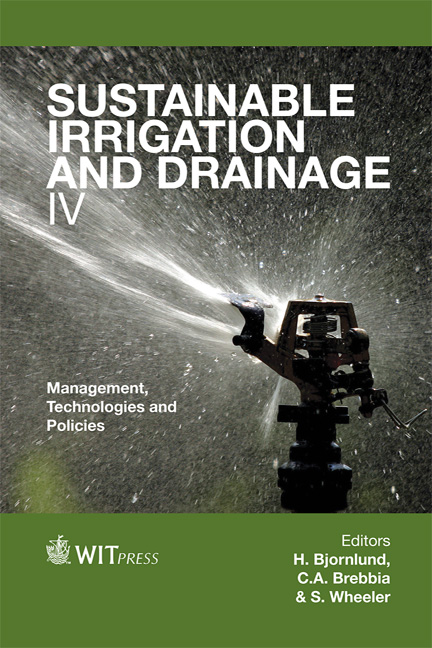A Comparison Of Water Application Uniformity For Drip Irrigation System Above And Below Soil Surface At Various Soil Depths And Scheduling Techniques In Arid Region
Price
Free (open access)
Transaction
Volume
168
Pages
12
Page Range
311 - 322
Published
2012
Size
654 kb
Paper DOI
10.2495/SI120271
Copyright
WIT Press
Author(s)
H. M. Al-Ghobari
Abstract
The uniformity of water application and its stability, however, are still a matter of controversy and deserve more investigation. An experiment was conducted to evaluate the surface and subsurface water application uniformity for drip irrigation system using three irrigation scheduling techniques under field conditions and to quantify uniformity of soil water content on the soil surface and below soil surface. In this study an evaluation of uniformity of surface drip irrigation system used to irrigate a tomato crop in Riyadh, Saudi Arabia. Three irrigation scheduling techniques were used in the field to irrigate tomato crop. The uniformity of water application from emitters and subsurface water contents below the soil surface after 24 hours from irrigation was determined at different distances and depths from the emitter in parallel and perpendicular directions to the drip line. Field results showed evidence the importance of redistribution of the applied water. The values of surface water uniformity from emitters were higher by approximately 13% than the subsurface uniformity below soil ground after 24 hours from irrigation. Also, the values of coefficients of subsurface uniformity varied in the lower soil layers than in the upper layers for all irrigation scheduling techniques. An experimental relationship between the uniformity coefficients of surface and subsurface was derived under arid region conditions. Keywords: drip irrigation, water redistribution, uniformity, scheduling techniques, below and above soil surface.
Keywords
drip irrigation, water redistribution, uniformity, scheduling techniques, below and above soil surface.





